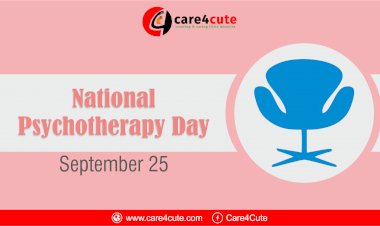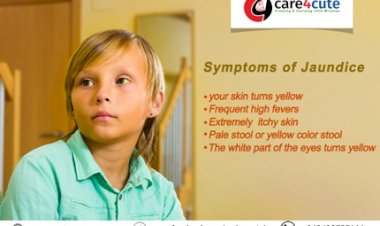Beyond the Hype: Unraveling 7 Myths Surrounding Dengue Fever
Dengue's rise in North India sparks health worries. Our article dispels myths, offers accurate info, and promotes public health awareness.
Introduction
In recent times, India, particularly North India, has been grappling with a concerning upsurge in cases of dengue fever. This infectious disease, transmitted primarily through the bite of infected mosquitoes, has taken on an alarming prevalence, prompting widespread public attention. However, amidst the growing number of cases, an equally formidable adversary has emerged: misinformation. Myths surrounding dengue fever have pervaded communities, casting a shadow of confusion and uncertainty. It is within this context that this article seeks to shed light on the pervasive myths associated with dengue fever, providing a wellspring of accurate information to dispel the fog of uncertainty and guide individuals towards better-informed decisions for their health and safety.
Dengue fever, caused by the dengue virus and transmitted by Aedes mosquitoes, has become a critical public health challenge. The seasonal nature of its outbreaks, especially pronounced in the northern regions of India, underscores the urgency to unravel the truths and falsehoods enveloping this disease. As we navigate this complex landscape, it is essential to draw a clear distinction between scientific facts and baseless misconceptions. By addressing these myths head-on, we not only empower individuals with accurate knowledge but also equip them with the necessary tools to actively participate in curbing the spread of dengue and protecting their well-being.
The following sections of this article will delve into these misconceptions, unveiling the reality behind each claim and dispelling the fog of misinformation. In an era where information is both abundant and readily accessible, separating fact from fiction has never been more important. As we embark on this journey of clarifying the truths about dengue fever, we invite readers to approach with an open mind, a willingness to learn, and a commitment to making informed choices. After all, it is only through collaborative efforts that we can hope to confront the challenges posed by dengue fever and pave the way for a healthier, more resilient society.
Myth 1: Dengue Fever Only Happens Once
One of the most persistent misconceptions about dengue fever is the belief that once you've experienced it, you're immune to future infections. While this notion holds a kernel of truth, the full picture is far more nuanced and deserves a closer examination.
When someone contracts dengue fever, they are infected with one of the four distinct serotypes of the dengue virus: DEN-1, DEN-2, DEN-3, or DEN-4. After recovery, the individual does develop an immune response specific to that serotype, offering protection against re-infection by the same serotype. This is where the misconception stems from – the idea that having had dengue once provides lifelong immunity.
However, this immunity is serotype-specific, and herein lies the complexity. If an individual who has previously had dengue is exposed to a different serotype in the future, their acquired immunity may not fully shield them. In fact, subsequent infections with a different serotype can lead to a more severe form of dengue, known as dengue hemorrhagic fever. This severe manifestation is characterized by a drop in platelet count, increased risk of bleeding, and even shock.
To put it simply, while prior dengue infection does confer some immunity against that specific serotype, it doesn't guarantee protection against the other three. This reality underscores the importance of consistent preventive measures, regardless of whether someone has had dengue in the past. The misconception that dengue only occurs once can potentially put individuals at risk, especially if they neglect mosquito bite prevention strategies based on a false sense of security.
Therefore, it is essential to emphasize that vigilance and mosquito control are paramount, irrespective of past dengue experiences. Recognizing the multi-serotype nature of the virus and the potential for more severe outcomes upon subsequent infections underscores the necessity of ongoing efforts to prevent mosquito breeding, minimize exposure, and seek medical attention promptly if symptoms arise.
Myth 2: All Mosquitoes Carry Dengue
Dispelling myths is not only about correcting misinformation but also about unraveling the intricate realities behind them. One of the commonly misunderstood aspects of dengue fever is the mistaken belief that all mosquitoes are carriers of the virus. This misconception often arises from a general lack of awareness about the specific species responsible for dengue transmission. While it's true that other mosquito species exist and can carry their own set of diseases, dengue transmission is predominantly attributed to Aedes mosquitoes. This species specificity in dengue transmission highlights the importance of targeted interventions. Focusing on eradicating breeding sites, implementing effective mosquito control measures, and raising awareness about the specific vectors of dengue are essential steps in curbing its spread.
Understanding the specific behaviors and habitats of Aedes mosquitoes enables us to channel our efforts more effectively, directing resources towards the most relevant strategies for prevention. By debunking the myth that all mosquitoes carry dengue, we empower individuals to adopt a proactive stance in safeguarding their environments against these specific vectors. This knowledge also encourages collaboration between communities, local authorities, and health organizations to collectively combat the threat posed by Aedes mosquitoes and the diseases they carry.
Myth 3: Dengue Can Spread From Person to Person
In a world where information travels at the speed of a click, it's not uncommon for misconceptions to spread as swiftly as facts. One such misconception regarding dengue fever is the belief that it can be directly transmitted from person to person, much like the common cold or the flu. Unraveling the truth behind this myth is essential to dispel unnecessary panic and promote accurate understanding of dengue transmission.
Unlike contagious respiratory illnesses, dengue fever does not spread directly from person to person through casual contact, such as touching or close proximity. Rather, the primary mode of transmission involves an intermediary: the mosquito. When an Aedes mosquito, usually Aedes aegypti, feeds on the blood of an infected person, it becomes a carrier of the dengue virus. Subsequently, when this infected mosquito bites another individual, it can transmit the virus into their bloodstream, potentially leading to a new case of dengue.
Myth 4: Eating Garlic or Vitamin B Protects Against Dengue
In the realm of health and wellness, myths often sprout from a mix of traditional beliefs and the desire for quick solutions. One such myth that has gained traction in relation to dengue fever is the notion that consuming garlic or vitamin B can provide protection against the virus. However, delving into the scientific understanding of dengue transmission and prevention reveals a different narrative.
While garlic has indeed been valued for its potential health benefits, particularly in terms of its antimicrobial properties, the idea that it can single-handedly shield individuals from dengue is not grounded in empirical evidence. Similarly, the notion that vitamin B can serve as a robust defense mechanism against dengue lacks substantial scientific backing. While vitamin B is essential for overall health, no conclusive studies establish a direct link between its consumption and dengue prevention.
Myth 5: Home Remedies Are Sufficient for Treatment
While some home remedies might alleviate mild symptoms, such as staying hydrated and resting, it's vital to recognize that dengue fever can escalate to severe levels. Prompt medical attention is essential if dengue is suspected. Severe cases may necessitate hospitalization and specialized care.
Myth 6: Herbal Products Can Cure Dengue
The allure of natural remedies has captivated humanity for centuries, often drawing from traditional knowledge and cultural practices. In the context of dengue fever, a prevailing myth suggests that herbal products possess the power to cure the illness. However, a closer examination of the scientific understanding of dengue and its treatment underscores the need for a more nuanced perspective.
While various herbs and plants are celebrated for their potential health benefits, the idea that herbal products can serve as a definitive cure for dengue remains unsubstantiated by rigorous scientific research. Dengue is a complex viral infection that can escalate to severe forms, and its management requires a comprehensive medical approach.
Herbal remedies, while they may offer symptomatic relief for mild cases, cannot replace the importance of seeking professional medical care. Delaying or neglecting appropriate medical attention in favor of unverified herbal treatments can exacerbate the progression of the disease and increase the risk of complications.
Myth 7: Dengue Only Occurs in Unsanitary Areas
Dengue mosquitoes can breed in both clean and stagnant water, debunking the notion that the virus is confined to unsanitary conditions. Vigilance is crucial to eliminate any potential mosquito breeding sites, such as containers, flower pots, and discarded items.
Conclusion
By dispelling these prevalent myths, we aim to enhance public understanding of dengue fever and encourage informed actions for prevention and treatment. Dengue is a serious illness that demands accurate information and proactive measures. To effectively manage the threat of dengue, raising awareness, practicing mosquito control, and seeking medical attention when necessary are paramount.








































Comments (0)